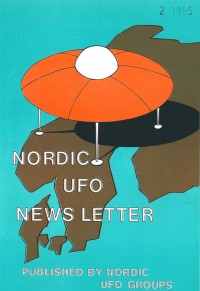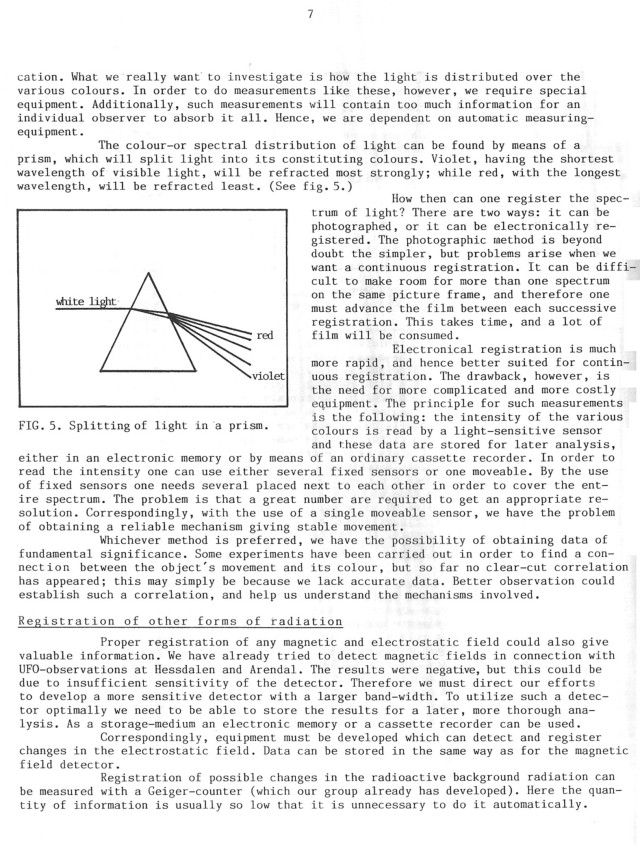Nordic UFO Newsletter1983, February issue, page 7. |

|

|
|
cation. What we really want to investigate is how the light is distributed over the various colours. In order to do measurements like these, however, we require special equipment. Additionally, such measurements will contain too much information for an individual observer to absorb it all. Hence, we are dependent on automatic measuring equipment. The colour - or spectral distribution of light can be found by means of a prism, which will split light into its constituting colours. Violet, having the shortest wavelength of visible light, will be refracted most strongly; while red, with the longest wavelength, will be refracted least. (See fig.5.) How then can one register the spectrum of light? There are two ways: it can be photographed, or it can be electronically registered. The photographic method is beyond doubt the simpler, but problems arise when we want a continuous registration. It can be difficult to make room for more than one spectrum on the same picture frame, and therefore one must advance the film between each successive registration. This takes time, and a lot of film will be consumed. Electronical registration is much more rapid, and hence better suited for continuous registration. The drawback, however, is the need for more complicated and more costly equipment. The principle for such measurements is the following: the intensity of the various colours is read by a light-sensitive sensor and these data are stored for later analysis, either in an electronic memory or by means of an ordinary cassette recorder. In order to read the intensity one can use either several fixed sensors or one moveable. By the use of fixed sensors one needs several placed next to each other in order to cover the entire spectrum. The problem is that a great number are required to get an appropriate resolution. Correspondingly, with the use of a single moveable sensor, we have the problem of obtaining a reliable mechanism giving stable movement. Whichever method is preferred, we have the possibility of obtaining data of fundamental significance. Some experiments have been carried out in order to find a connection between the object's movement and its colour, but so far no clear-cut correlation has appeared; this may simply be because we lack accurate data. Better observation could establish such a correlation, and help us understand the mechanisms involved. FIG. 5. Splitting of light in a prism. Registration of other forms of radiation Proper registration of any magnetic and electrostatic field could also give valuable information. We have already tried to detect magnetic fields in connection with UFO-observations at Hessdalen and Arendal. The results were negative, but this could be due to insufficient sensitivity of the detector. Therefore we must direct our efforts to develop a more sensitive detector with a larger band-width. To utilize such a detector optimally we need to be able to store the results for a later, more thorough analysis. As a storage-medium an electronic memory or a cassette recorder can be used. Correspondingly, equipment must be developed which can detect and register changes in the electrostatic field. Data can be stored in the same way as for the magnetic field detector. Registration of possible changes in the radioactive background radiation can be measured with a Geiger-counter (which our group already has developed). Here the quantity of information is usually so low that it is unnecessary to do it automatically. |